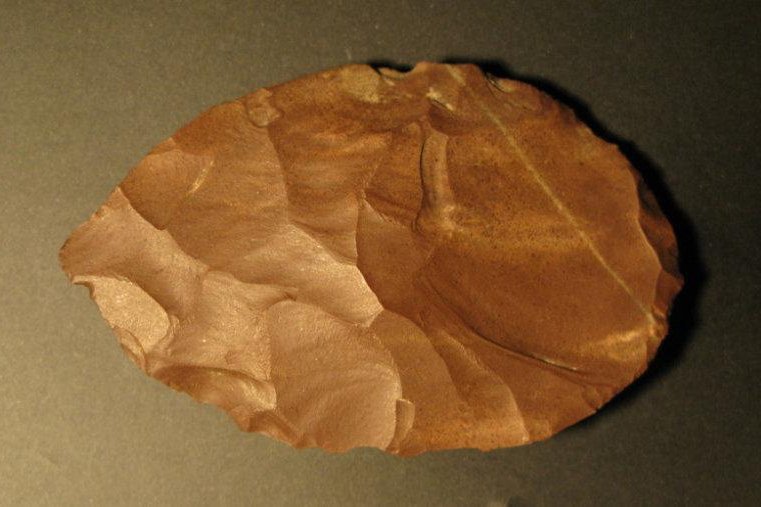Artifacts, like a stone spear tip, suggest the cave's inhabitants became more mobile between 48,000 and 40,000 years ago -- venturing farther from the cave and sourcing materials from more disparate locations. Photo by Miroslav Kralík/ANU
June 14 (UPI) -- The excavation of a cave in the Czech Republic has offered archaeologists evidence of both Neanderthal and human activity in the region between 28,000 and 50,000 years ago.
Researchers say the wealth of artifacts has provided insights into the transition from Neanderthals to modern humans.
In addition to thousands of animal bones, excavators have recovered stone tools and weaponry, as well as the oldest carved bone bead in Central Europe.
"In the early layers the items we've found are locally made flakes, possibly used by small communities living and hunting in the vicinity to kill animals or prepare food, but around 40,000 years ago we start to see objects coming from long distances away," Duncan Wright, an archaeologist at the Australian National University, said in a news release.
The bone bead is also roughly 40,000 years old. Researchers say the artifact is evidence of social signaling.
"Between these two periods, we've either seen a change in behavior and human movement or possibly even a change in species," Wright said.
Between 48,000 and 40,000 years ago, early humans became increasingly mobile. Groups began making much longer and more frequent treks away from their home base.
The most recent sedimentary layers in the cave revealed materials from more disparate locations, while older sediments featured artifacts carved from locally sourced materials.
The artifacts also offer clues to the period's shifting climate.
"The climate changed quite often from warmer to colder, and vice versa, but at all times it was much colder than the interglacial period that we have lived in for the past 10,000 years," said Ladislav Nejman, an archaeologist at the University of Sydney.
Researchers hope further analysis could offer insight into the early interactions between Neanderthals and Homo sapiens.
"It's quite possible that the two different species of humans met in this area," said Nejman.
Researchers shared their analysis of the hominid artifacts in the Journal of Human Evolution.















